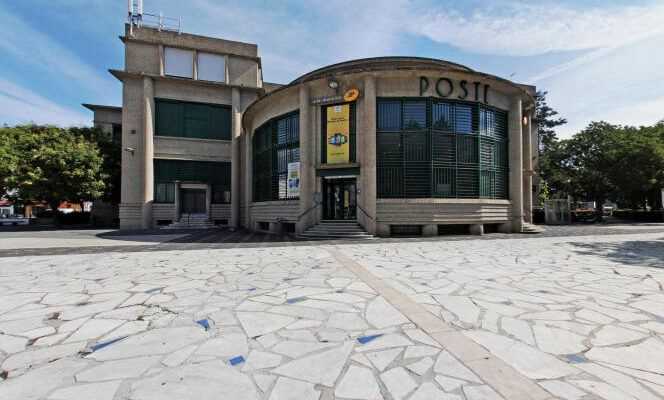MORNING LIST
The emblematic building on rue du Louvre in Paris, erected in 1888, has just been renovated by architect Dominique Perrault and will open in 2022. In the meantime, here are five lesser-known treasures of postal heritage.
The oriental palace of Mâcon
How could an oriental palace thus land in 1914 in one of the capitals of the Burgundy vineyard? Simply because this building was initially intended for the large post office of Algiers! “The project of the architect Jules Lavirotte, refused by the Algerian authorities was transferred to Mâcon and finished with the help of the local architect Choquin”, tells the book Postal architecture: a history in motion (Archibooks, 2010).
A major figure in Art Nouveau and Prix de Rome, Jules Lavirotte (1864-1929) produced an architectural pastiche with this post office building on which bunches of grapes replaced the original dates. The large sculpted arches of the first level reflect the oriental influence, the central bays recall Romanesque architecture and the two turrets with remarkable roofs, like the general appearance of the building, are a fantasized reinterpretation of a Renaissance castle. If the post office is still open, the rest of the building is now occupied by a hotel.
3, rue Victor-Hugo, Mâcon.
The chapel of Le Touquet
In the mid-1920s, Paris-Plage, the old name given to the town of Touquet, needed a post office hotel. To find a place for it, city councilors and citizens agree on the demolition of the Saint-André chapel.
Chosen by competition, the architect Jean Boissel (1891-1951) was inspired by this history to give the new postal building a false appearance of a church. The post office erected in 1927 thus sees its roof surmounted by a steeple. With these religious lines, Jean Boissel mixes the architectural style of the beautiful local villas of the interwar period of which he is also one of the main builders. He thus gave birth to a hybrid and fanciful architecture, since then classified in the Supplementary Inventory of Historical Monuments. Far-right activist, the architect accused of collaboration with Nazi Germany died in prison in 1951.
100, rue de Metz, Le Touquet (Pas-de-Calais).
The red bricks of Nice
With its 300,000 red bricks, the extravagant Post Office hotel stands out in the heart of the city of Nice. Legend has it that the postal building was originally intended for the city of Lille, which would explain its appearance as a building in northern France. The 27-meter-high clock tower adds to the picturesque construction.
You have 49.19% of this article to read. The rest is for subscribers only.
